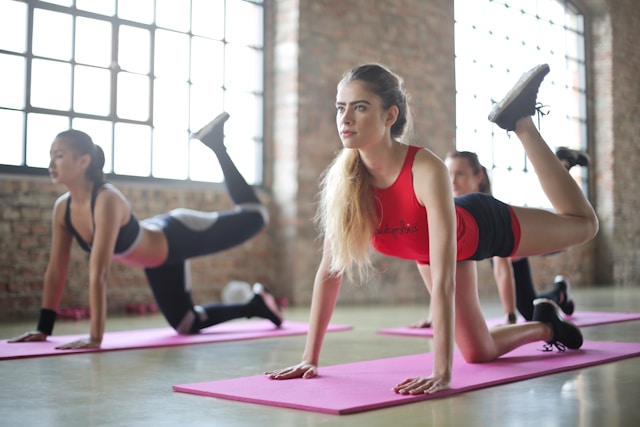Many people find themselves working in sedentary jobs that require long hours of sitting at a desk. This lifestyle can lead to various health issues such as obesity, cardiovascular disease, and musculoskeletal problems. However, incorporating more movement into your day can significantly improve your physical and mental well-being. Here’s a comprehensive guide on how to stay active throughout the workday, even if you have a sedentary job.
1. Understand the Importance of Movement
Before diving into specific strategies, it’s essential to understand why movement is crucial. Regular physical activity helps to:
- Improve cardiovascular health
- Enhance mental well-being and reduce stress
- Boost energy levels and reduce fatigue
- Prevent weight gain and support weight management
- Improve posture and reduce musculoskeletal pain
Recognising these benefits can motivate you to incorporate more movement into your daily routine.
2. Set a Timer
One effective strategy is to set a timer to remind you to move. Every 30 to 60 minutes, take a short break to stand up, stretch, and walk around. These breaks don’t have to be long; even 2–5 minutes of activity can help to counteract the negative effects of prolonged sitting. Use a timer on your phone or computer, or invest in a wearable fitness tracker that vibrates to remind you to move.
3. Incorporate Desk Exercises
Desk exercises are simple movements you can perform without leaving your workspace. Some effective desk exercises include:
- Chair Squats: Stand up from your chair (be careful if you have wheels on it), lower your body back down as if you’re going to sit, then stand back up.
- Calf Raises: Stand up and lift your heels off the ground, then lower them back down.
- Seated Leg Lifts: While seated, lift a leg and hold it straight out in front of you for a few seconds, then do the the other leg.
- Shoulder Shrugs: Lift your shoulders up towards your ears and then release them back down.
These exercises can be done discreetly and provide a quick way to get your blood flowing.
4. Use a Standing Desk

Standing desks are increasingly popular for their health benefits, enabling you to alternate between sitting and standing throughout the day. If a standing desk isn’t an option, try using a desk converter to raise your monitor and keyboard to a standing height. Standing burns more calories than sitting and can help reduce the risk of musculoskeletal problems.
5. Take Walking Meetings
Whenever possible, suggest walking meetings. Instead of sitting in a conference room, walk around the office or go outside for a walk while discussing business matters. Walking meetings can stimulate creativity and improve problem-solving skills, in addition to providing physical activity.
6. Utilise Your Lunch Break
Make the most of your lunch break by incorporating physical activity. Instead of eating at your desk, take a walk outside or get your gym leggings and visit a nearby gym. If time is limited, even a brisk 10–15 minute walk can rejuvenate you and help you to feel more alert for the rest of the day.
7. Stretch Regularly

Stretching helps to alleviate tension and prevent stiffness. Incorporate regular stretching breaks into your day. Focus on areas that commonly experience strain from prolonged sitting, such as your neck, shoulders, back, and hips. Simple stretches like neck rolls, shoulder shrugs, and seated spinal twists can make a significant difference.
8. Use the Stairs
Opt to go up and down stairs instead of using the elevator whenever possible. Heading up stairs is a great cardiovascular exercise that also strengthens your legs and glutes. Make it a habit to take the stairs, especially if you work on a lower floor.
9. Stay Hydrated
Drinking water not only keeps you hydrated but also encourages you to move more. Regular hydration means that you’ll need to take frequent trips to the restroom, providing natural breaks from sitting. Keep a water bottle at your desk and set reminders to drink water throughout the day.
10. Practice Good Posture
Maintaining good posture is a leading method of preventing musculoskeletal problems. Make sure your workstation is ergonomically set up to support proper posture. Your chair should support your lower back, and your computer screen should be at eye level to prevent neck strain. Good posture reduces the risk of developing back and neck pain and helps you to feel more comfortable throughout the day.
11. Engage in Micro-Workouts
Micro-workouts are short, intense bursts of exercise that can be done in just a few minutes. Examples include:
- Jumping Jacks: Do these for 1–2 minutes to get your heart rate up.
- High Knees: Run in place, bringing your knees up towards your chest.
- Desk Push-Ups: Use your desk to perform inclined push-ups.
These quick exercises can boost your energy and break up the monotony of sitting.
12. Participate in Office Wellness Programs

Many companies offer wellness programs that encourage employees to stay active. Participate in any available programs, such as fitness challenges, lunchtime yoga sessions, or team sports. Engaging in these activities can provide motivation and create a supportive environment for staying active.
13. Use Technology to Your Advantage
Numerous apps and devices are designed to help you stay active. Fitness trackers can monitor your daily steps and activity levels, encouraging you to move more. Apps like Stand Up! or StretchMinder can prompt you to take breaks and stretch. Leverage technology to create a routine that keeps you moving throughout the day.
14. Create a Home Office Workout Routine
If you work from home, it can be easy to become even more sedentary. Design a home office workout routine that includes regular breaks for physical activity. Use resistance bands, dumbbells, or a yoga mat to perform exercises right in your workspace. Incorporating bodyweight exercises like squats, lunges, and planks can also be effective.
15. Stay Consistent
Consistency is key to reaping the benefits of increased movement. Make it a priority to integrate these strategies into your daily routine. Over time, they will become habits that significantly improve your overall health and well-being.
Conclusion
Incorporating more movement into your day, even with a sedentary job, is achievable with some planning and commitment. By setting reminders, using the appropriate equipment, taking advantage of breaks, and making small changes to your routine, you can maintain an active and healthy lifestyle. Remember, every bit of movement counts and contributes to better physical and mental health. Stay motivated, be consistent, and enjoy the benefits of a more active lifestyle.






